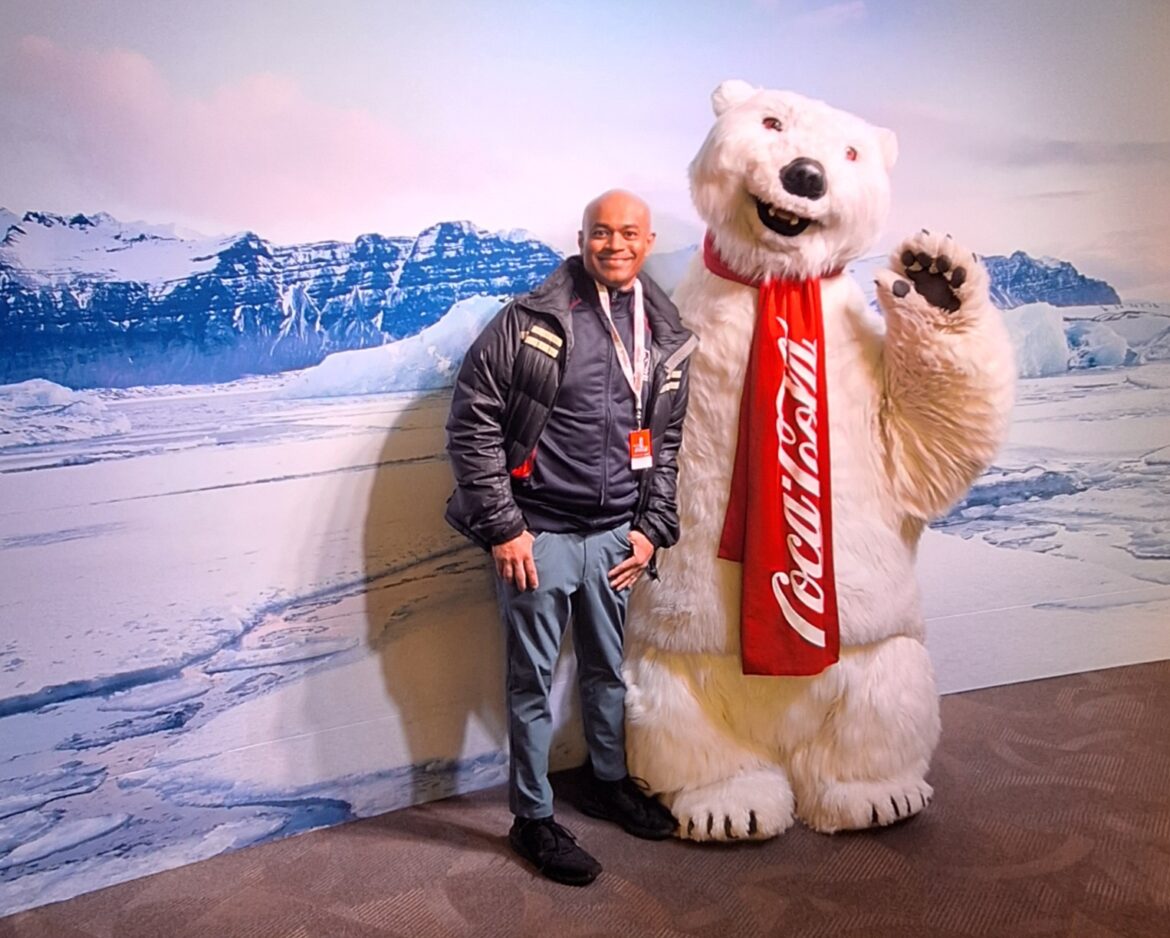Points Miles and Bling (blog) contains referral or affiliate links. The blog receives a small commission at no additional cost to you. Thank you for your continued support. Credit Card issuers are not responsible for maintaining or monitoring the accuracy of information on this website. For full details, current product information, and Terms and Conditions, click the link included.
With just two days in Atlanta, I had a packed itinerary to make the most of my time there. I’d chosen to visit in February, hoping to escape the winter chill of Toronto, but to my surprise, the weather dipped below 0°C during my stay. According to the locals, this was unseasonably cold for Atlanta, but it didn’t dampen my plans to explore the city’s rich history and famous sites.
Two days in Atlanta – Day 1
My first day in Atlanta focused on visiting the landmarks dedicated to two of Georgia’s most famous sons, both Nobel Peace Prize winners—Dr. Martin Luther King Jr. and President Jimmy Carter.
MLK Historical Park:
I started my day at the Martin Luther King Jr. Historical Park, a short Uber ride from my hotel – Fairfield Inn Atlanta (Review). The park is free to visit and is one of Atlanta’s most significant tourist attractions. It features King’s birthplace, the Ebenezer Baptist Church, and his gravesite alongside that of his wife, Coretta Scott King.
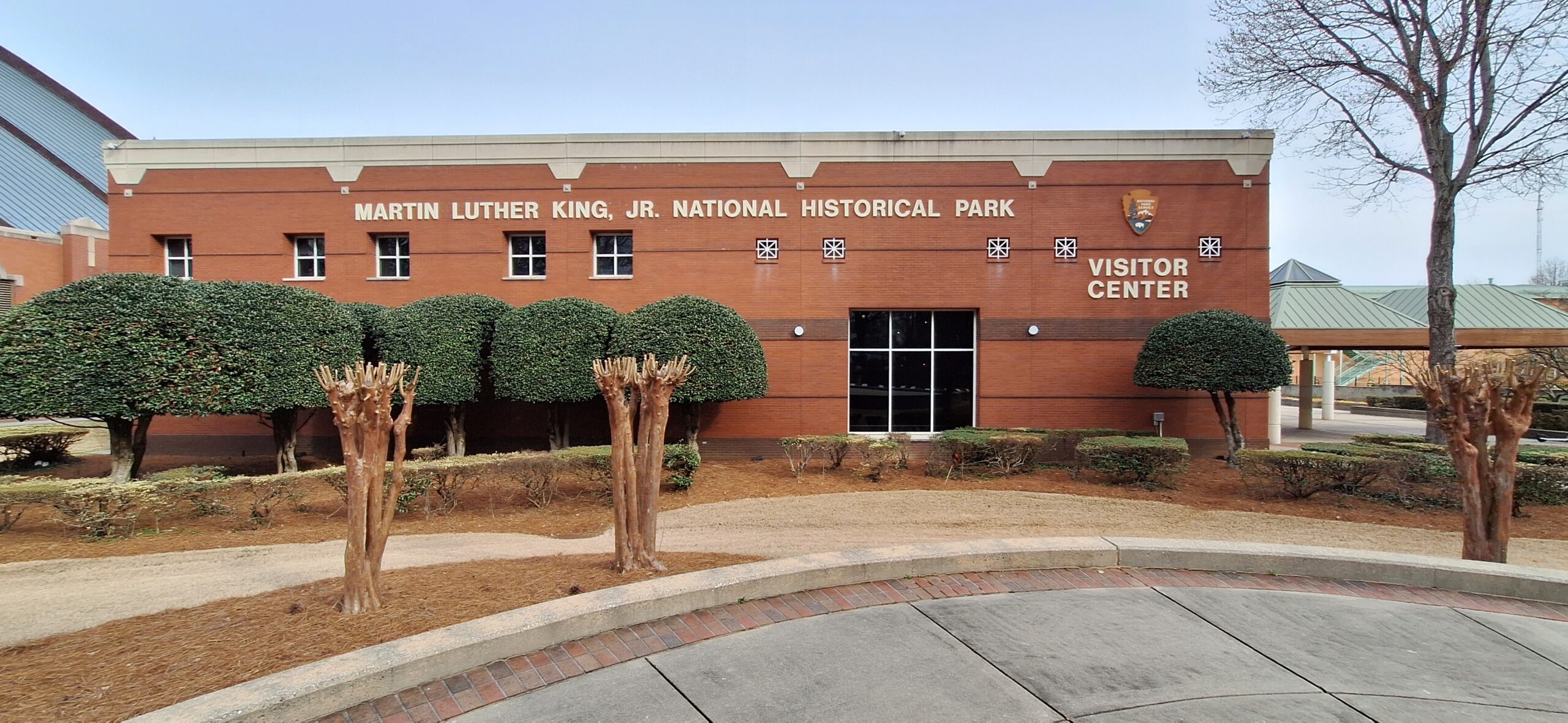
Martin Luther King Jr. Historical Park
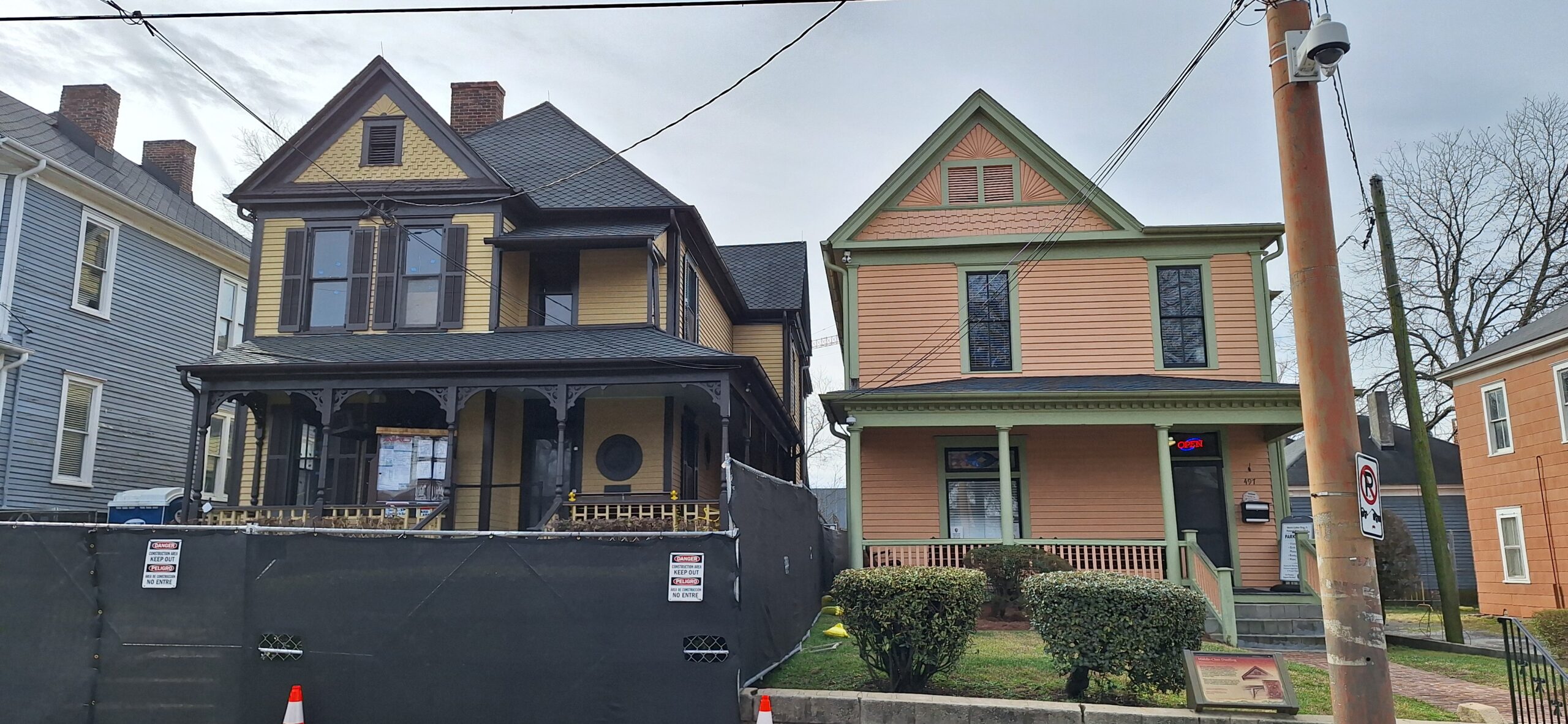
MLK’s birth home – 495 Auburn Avenue
At MLK’s birth home, located at 495 Auburn Avenue, I learned about its rich history. Built in 1895, it was purchased by MLK’s grandfather in 1905 and was one of the most affluent homes in a prominent African-American neighbourhood known as “Sweet Auburn Avenue.” Unfortunately, the house is currently under renovation and scheduled to reopen in 2025. Instead, the tour is next door in the gift shop, where large photo billboards showcase the home’s interiors. A few interesting facts from the tour: King was born at home because his father didn’t trust segregated hospitals, and MLK lived in this house for the first 12 years of his life.
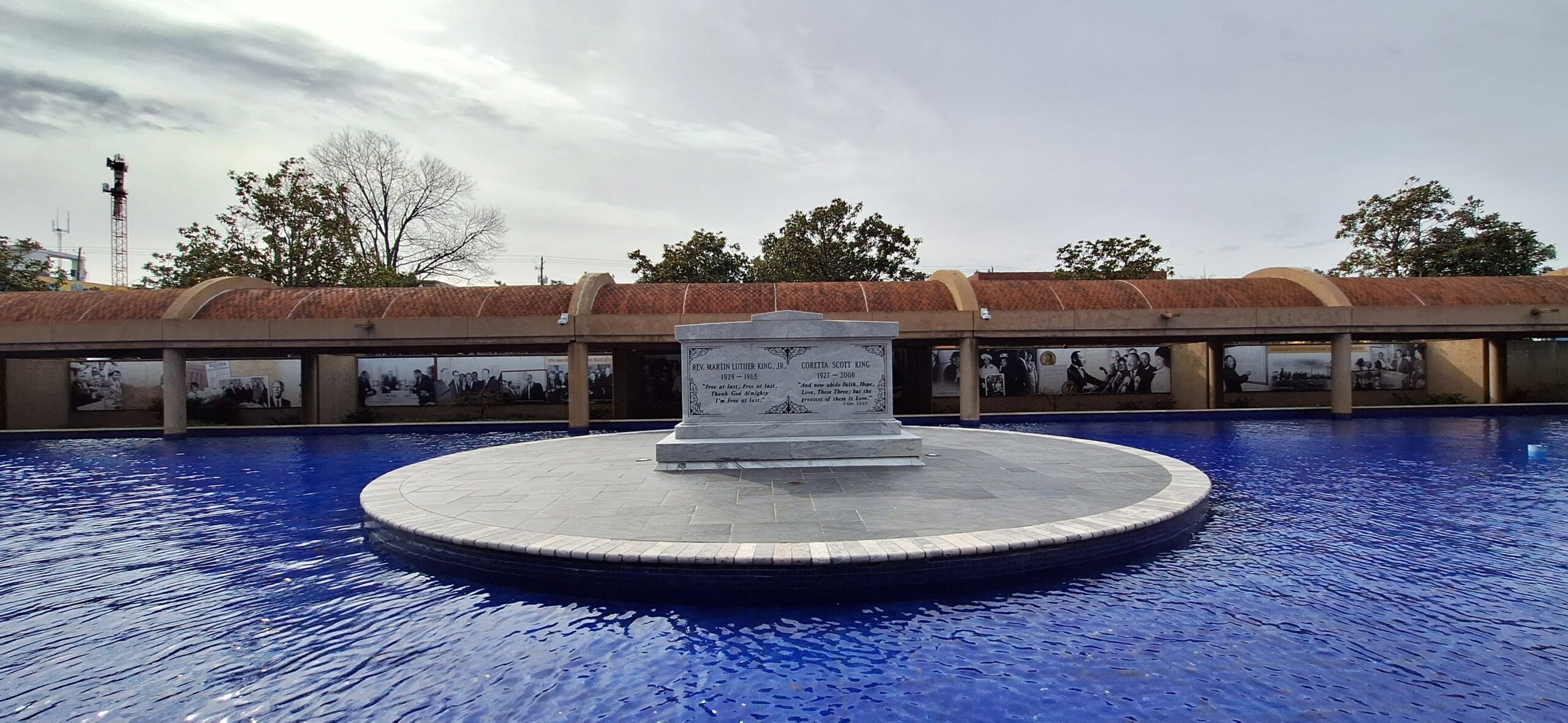
Tomb of Martin Luther King and Coretta Scott King
Next, I visited the Ebenezer Baptist Church, which still has its original stained glass windows and pews. It’s preserved just as King’s funeral on April 9th, 1968. The clock in the church remains set to 10:30 am, the time of his service. Another heartbreaking detail I learned is that King’s mother was tragically shot and killed inside the church just a few years after his assassination. Despite these tragedies, the church holds a powerful sense of history and significance.
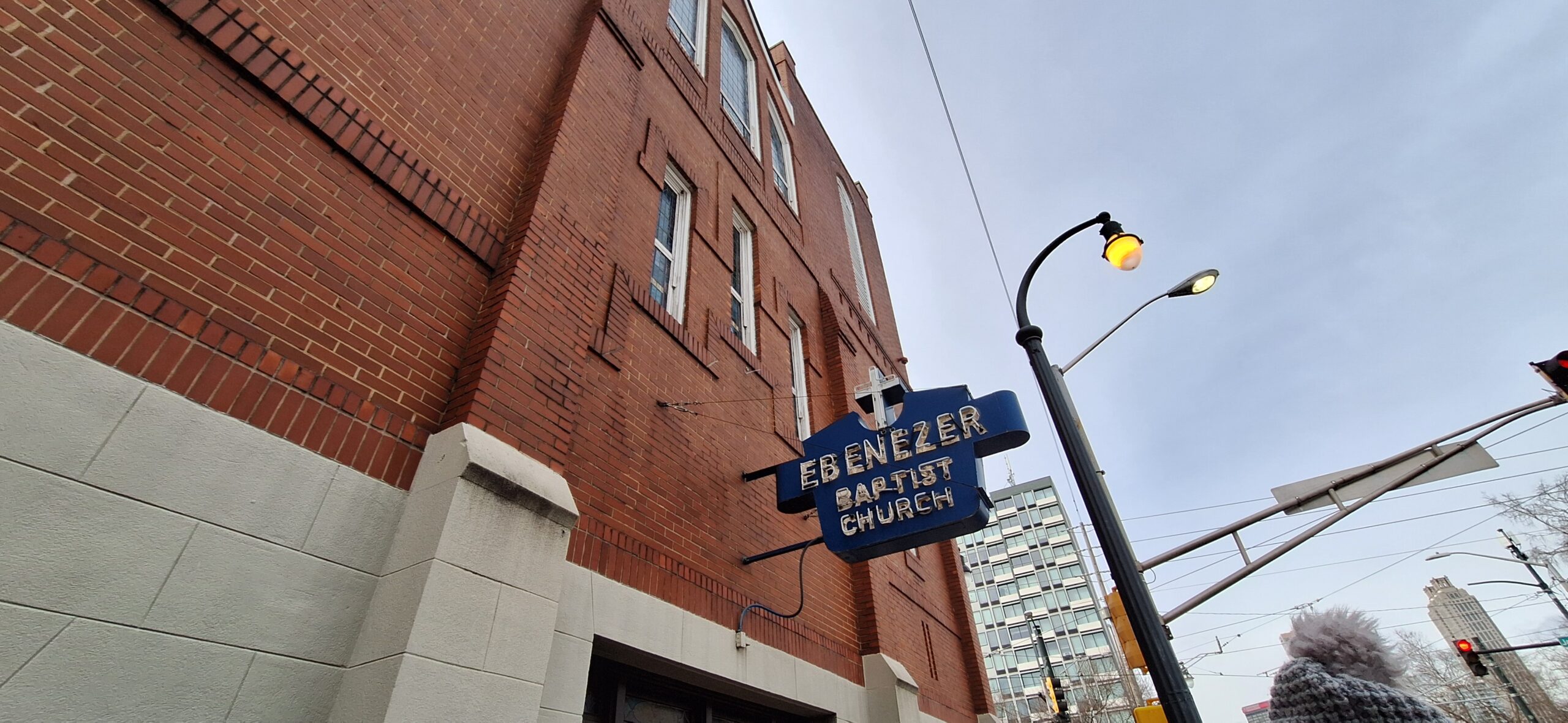
Ebenezer Baptist Church
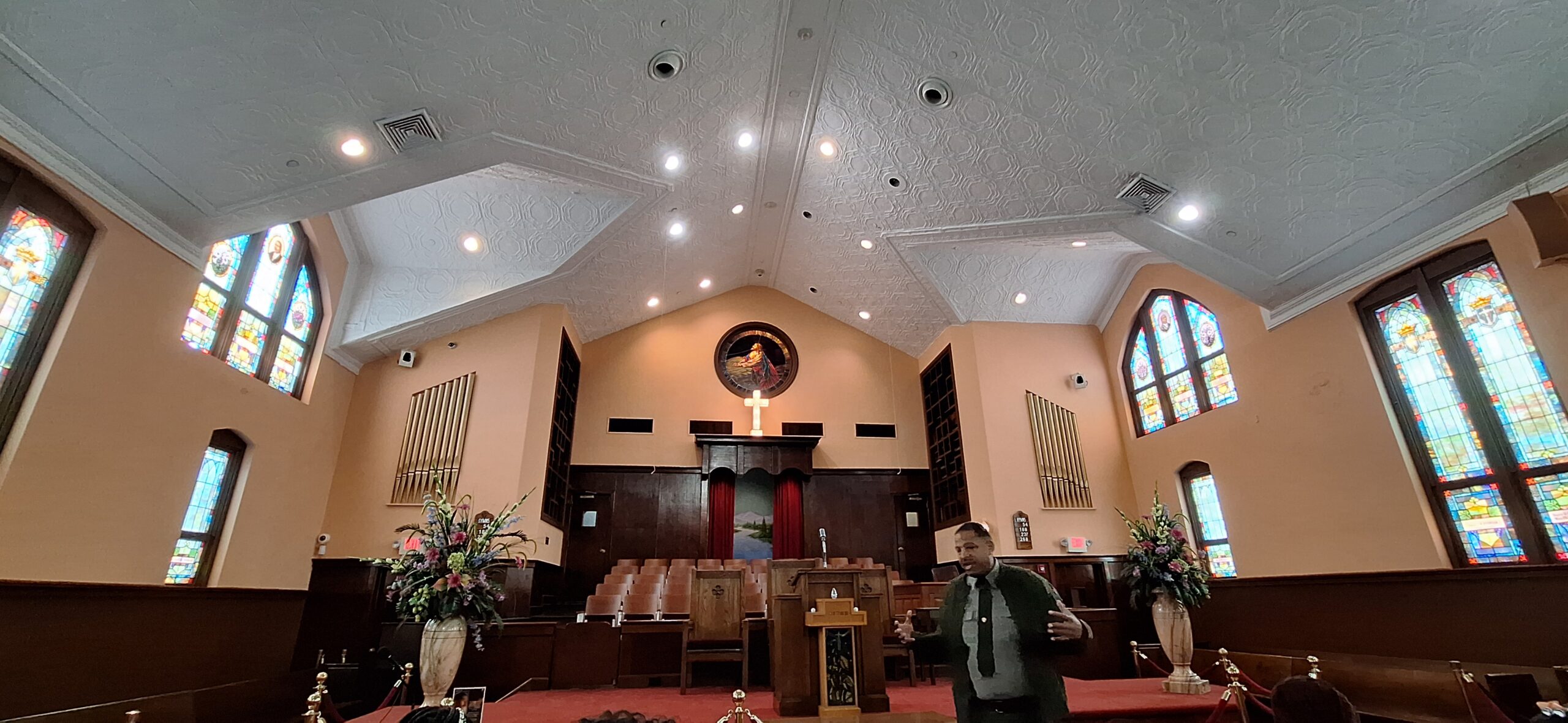
Inside Ebenezer Baptist Church
Jimmy Carter Presidential Library and Museum:
After leaving MLK Park, I took another Uber to the Jimmy Carter Presidential Library and Museum. I’ve visited several other presidential libraries before, including JFK’s in Boston and George W. Bush’s in Dallas, and I find these places fascinating, even if you’re not a political enthusiast.
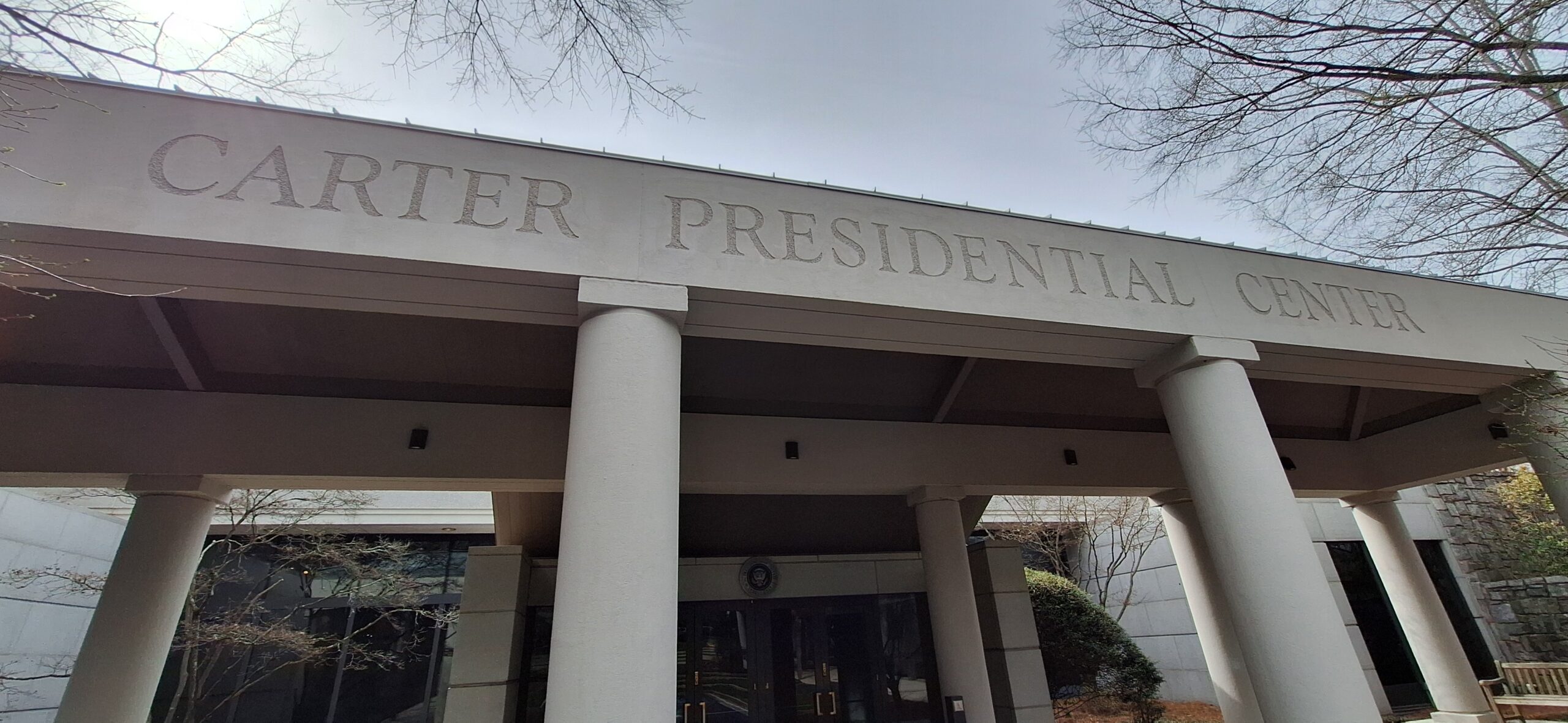
Jimmy Carter Presidential Library and Museum
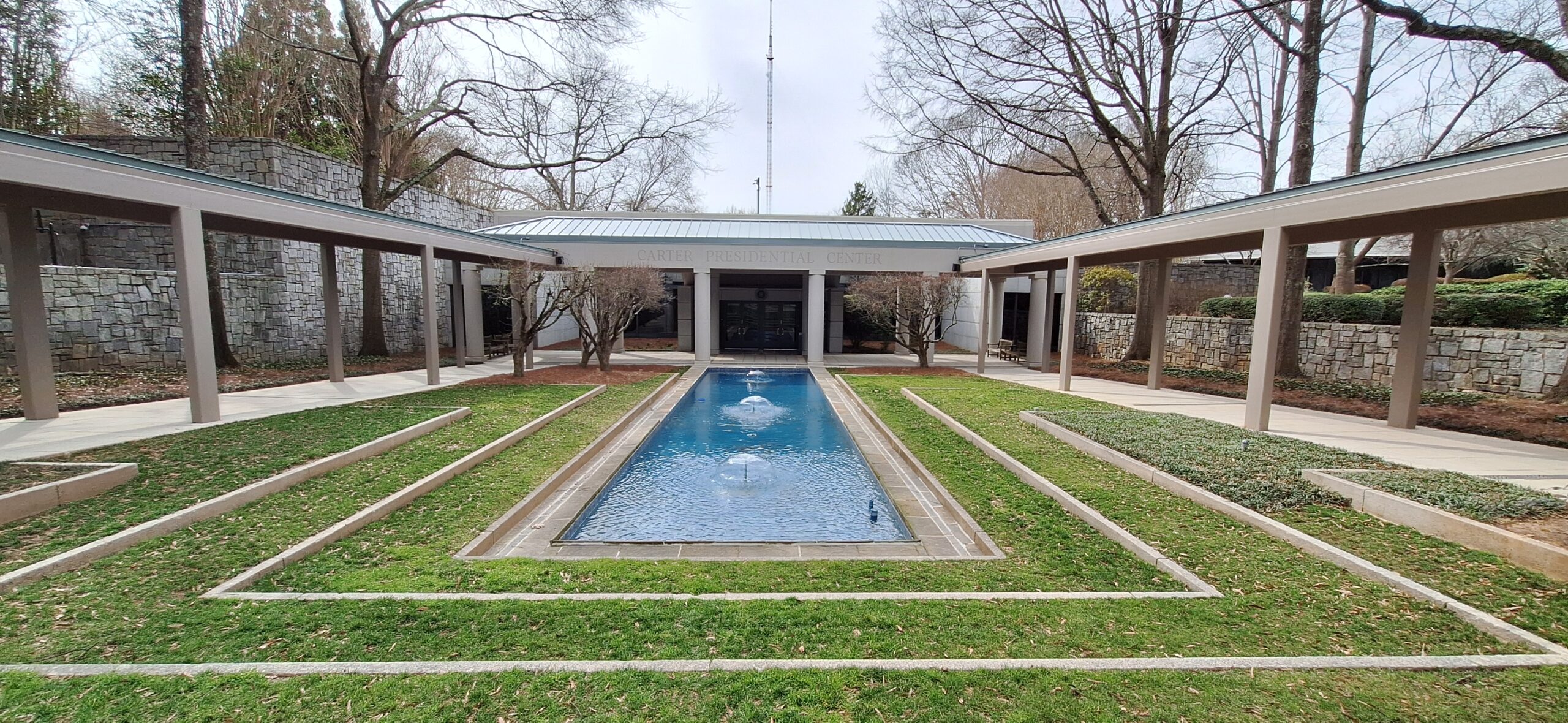
Courtyard – Jimmy Carter Presidential Library and Museum
Since it was President’s Day weekend, admission was free, though it was typically $12. The museum offers a thorough overview of Carter’s life, beginning with his naval career through his time as Georgia’s governor, presidency, and post-presidential years. Rosalynn Carter’s significant role in his presidency is also highlighted, emphasizing her influence in critical decisions and her advocacy for mental health.
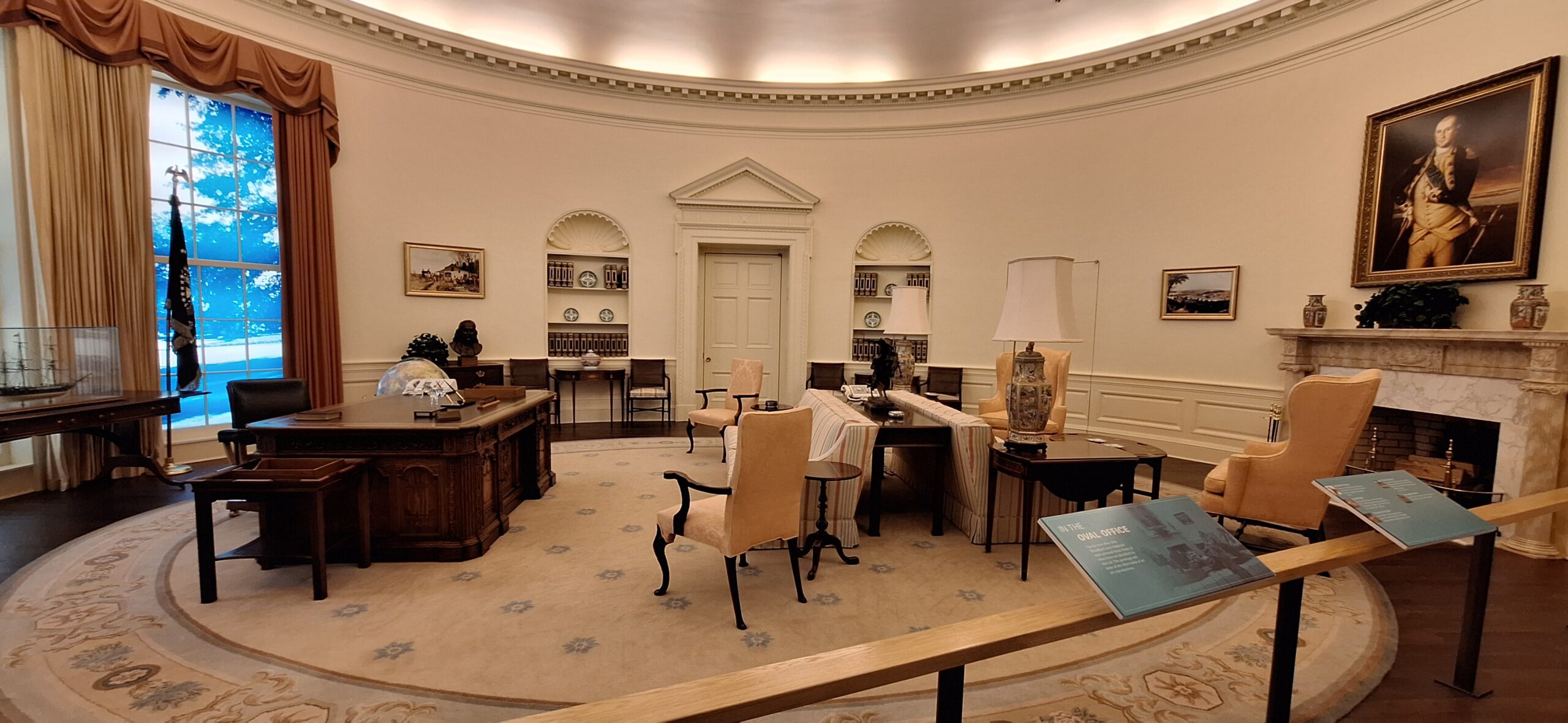
Library and Museum – Oval Office
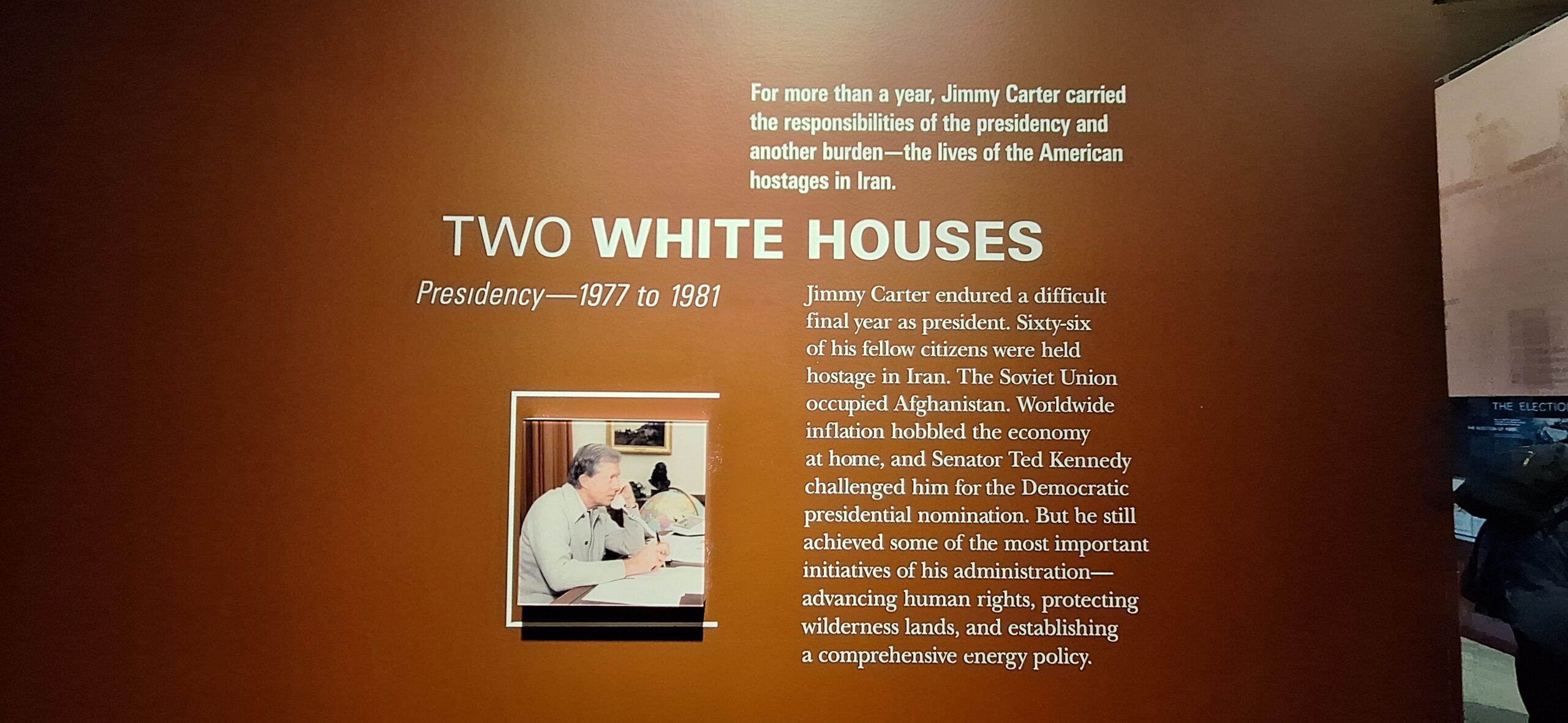
The exhibits cover significant moments from his presidency, including the creation of the Department of Energy and the Camp David Accords, which facilitated peace between Egypt and Israel. One memorable exhibit features a video of Carter discussing the 1981 Iran Hostage Crisis, which ended on his last day in office as Ronald Reagan was inaugurated. Carter’s Nobel Peace Prize, awarded in 2002 for promoting peace, democracy, and human rights, is also on display.
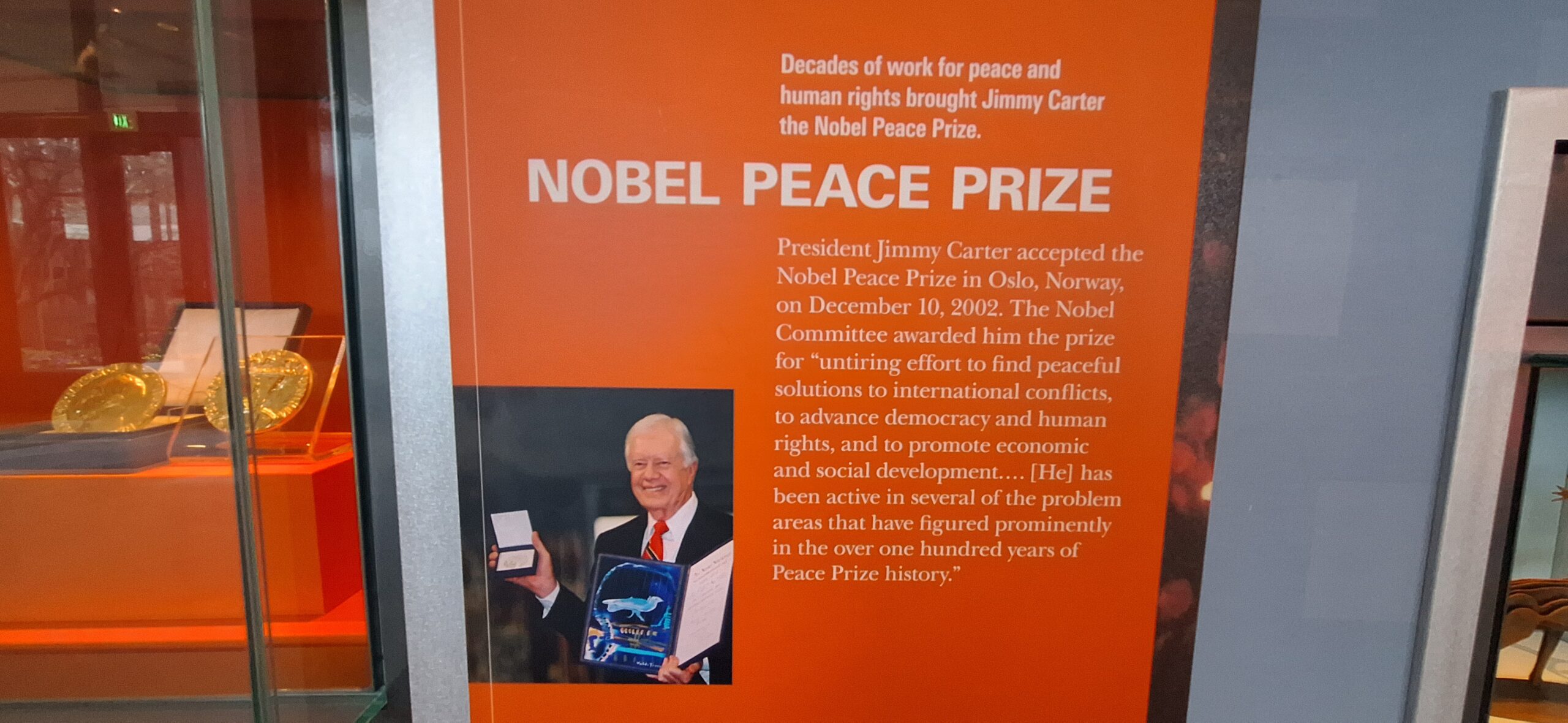
The museum’s final section focuses on Carter’s post-presidency work, including the creation of the Carter Center, which has been instrumental in fighting diseases in developing nations and advancing social causes. Carter’s legacy is one of compassion and humanitarianism, and at 99 years old, he remains the longest-living former U.S. president.
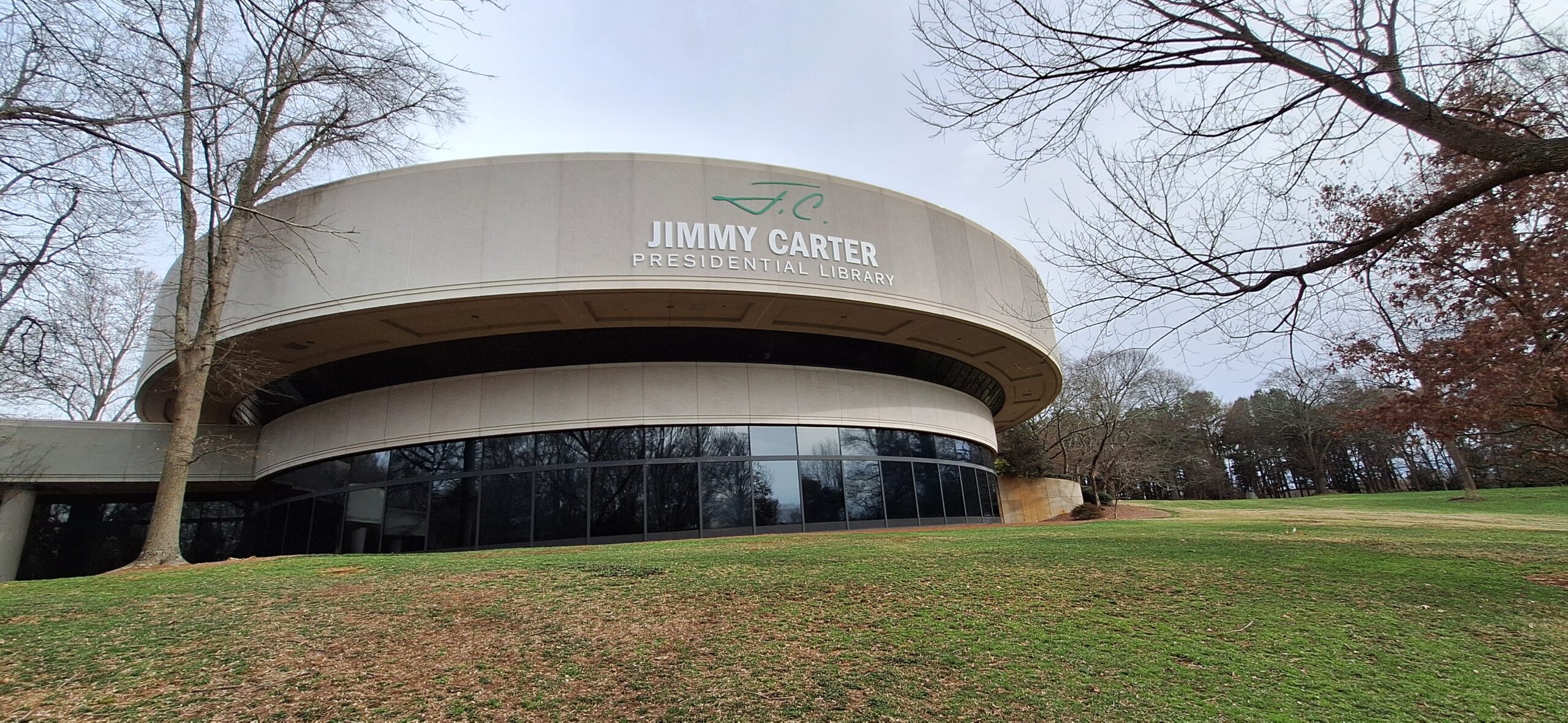
Jimmy Carter Presidential Library
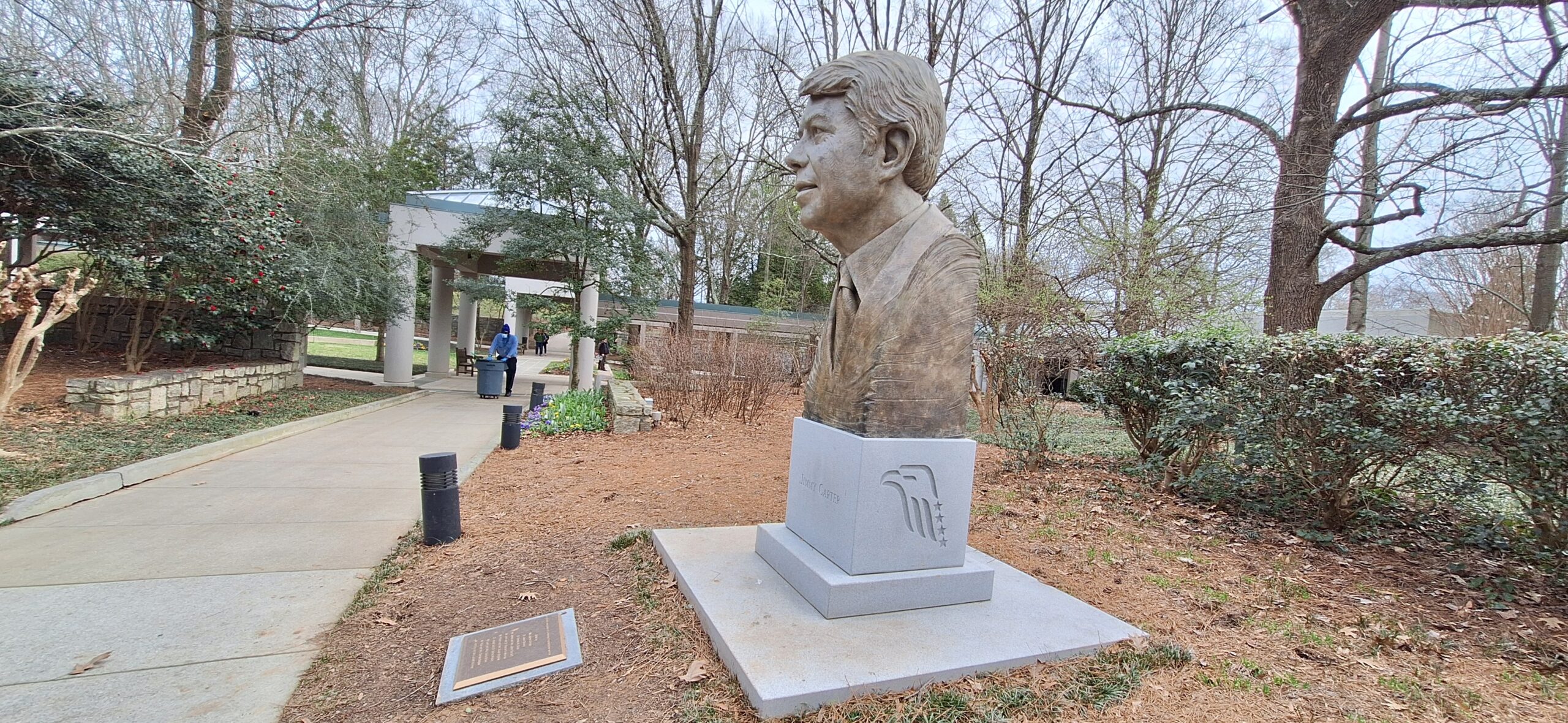
Jimmy Carter
Two days in Atlanta – Day 2
I started my second day in Atlanta with a visit to Centennial Olympic Park, which was only a 10-minute walk from my hotel. This park, built for the 1996 Summer Olympics, features a statue of Pierre de Coubertin, the founder of the modern Olympic Games. While the park seemed somewhat deserted during my visit, it offers a peaceful spot for a walk, especially if you’re travelling with a dog, as I saw many dog walkers enjoying the area.
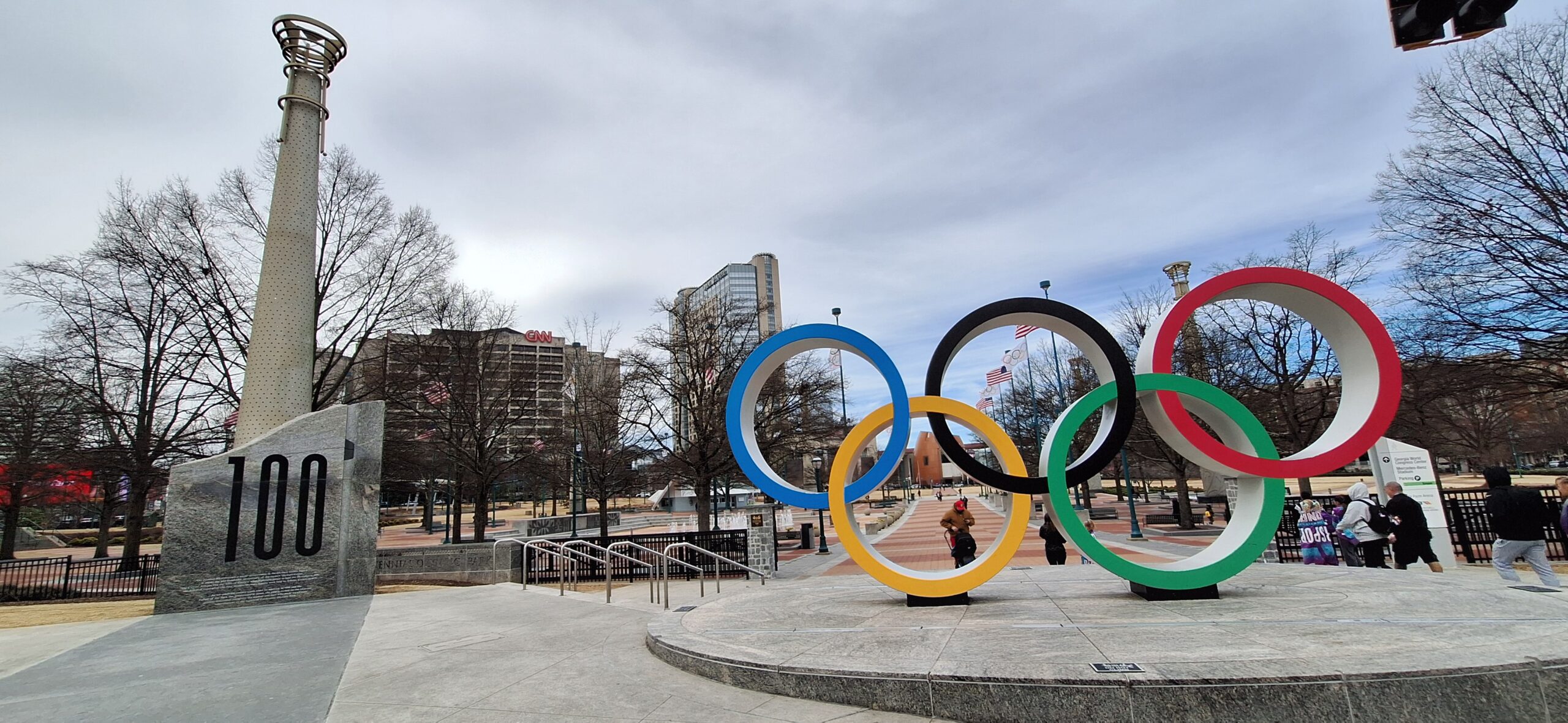
Centennial Olympic Park
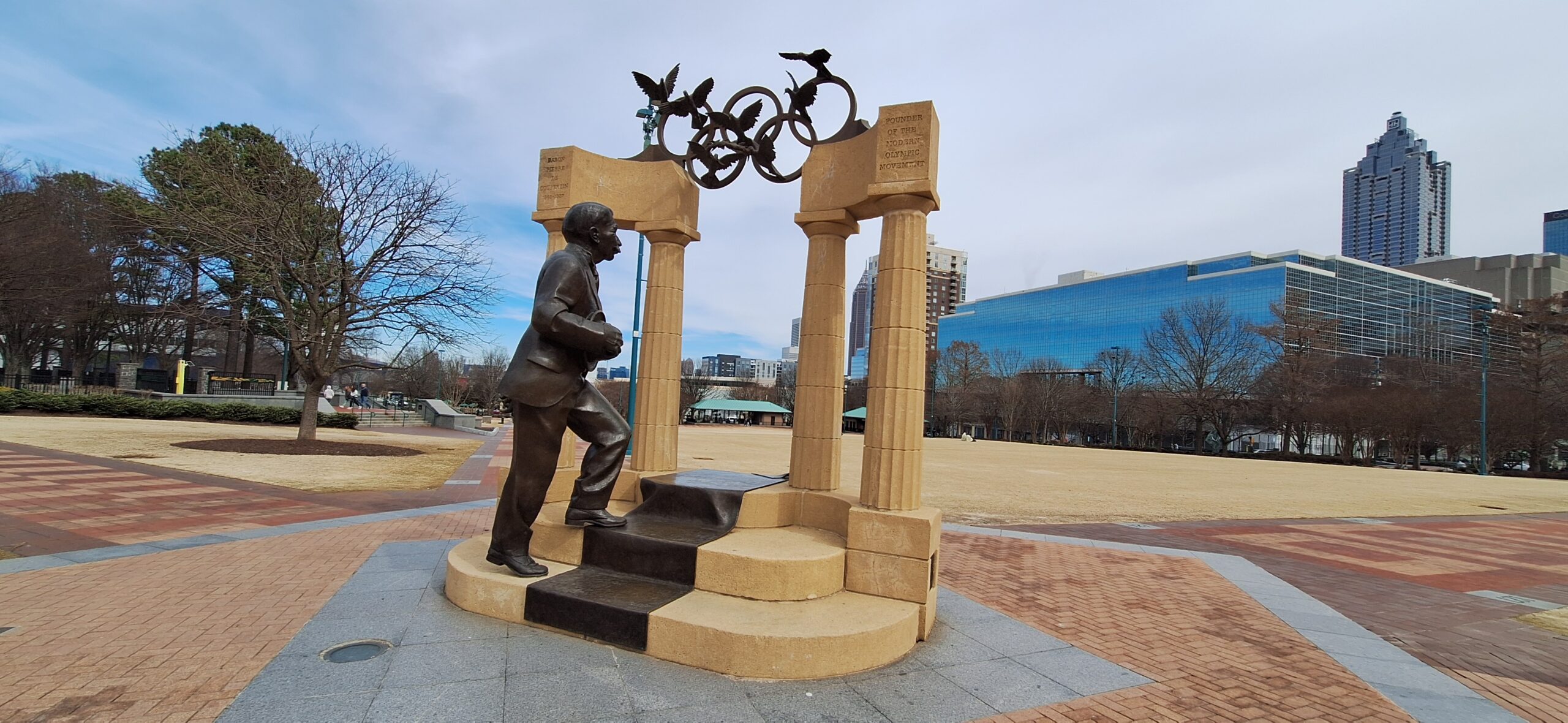
Pierre de Coubertin – Founder of the modern Olympic Games
The park also has a memorial dedicated to Richard Jewell, the security guard who discovered a pipe bomb during a concert at the 1996 Olympics. His quick actions saved countless lives, although the explosion still resulted in two deaths. Jewell’s story gained renewed attention after Clint Eastwood directed a film about him, which is worth watching if you’re interested.
U.S. College Football Hall of Fame:
After a stroll through the park, I visited several nearby attractions in Pemberton Place, named after John Pemberton, the inventor of Coca-Cola. This area is home to the World of Coca-Cola, the College Football Hall of Fame, the Georgia Aquarium, and the Center for Civil and Human Rights.
While I’m not a huge college football fan, the College Football Hall of Fame was an entertaining visit. It’s a three-story museum where you start on the top floor and work your way down. The third floor features a list of all the annual inductees, while the second floor showcases football-related artifacts, including the Heisman Trophy and various jerseys. The first floor has a football field where visitors can practice throwing and kicking, making it a fun stop for families.
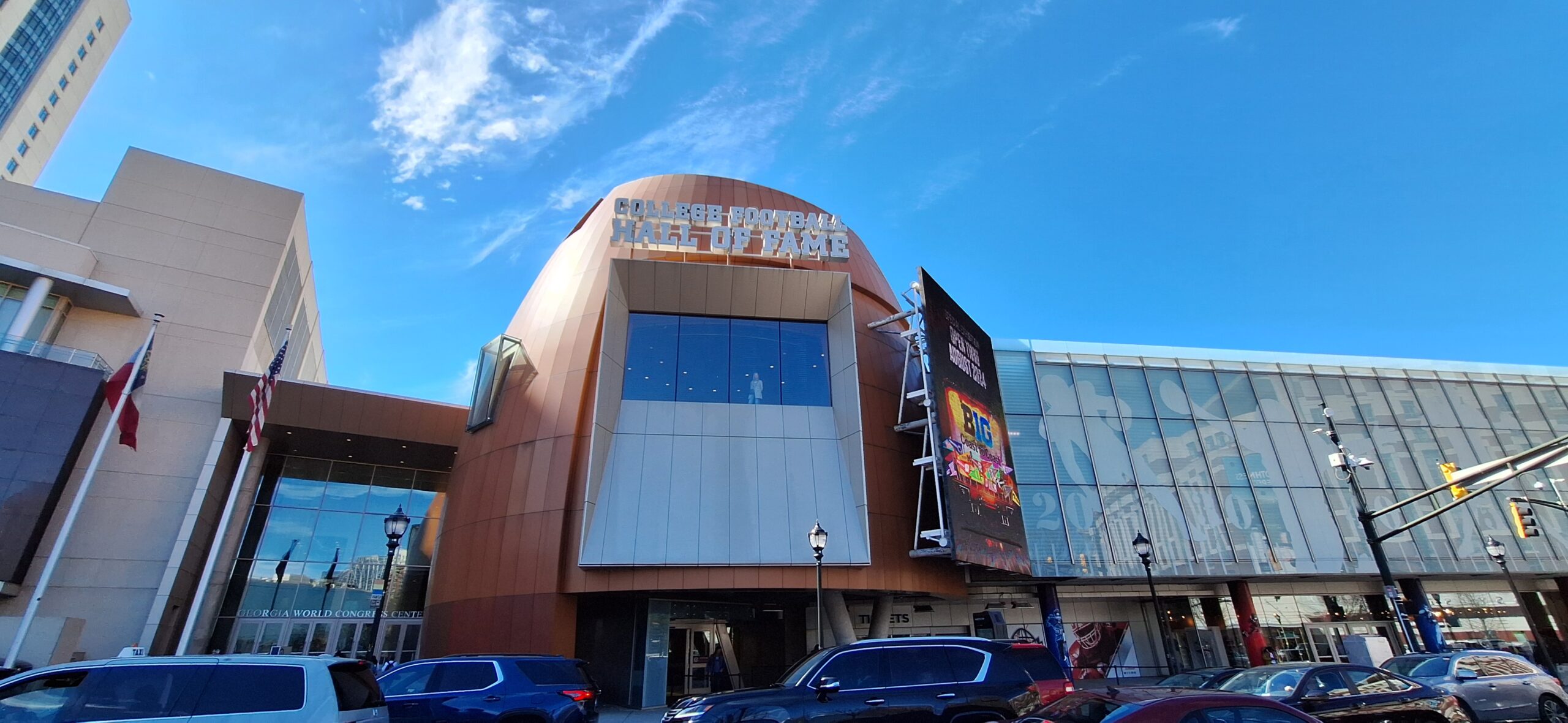
College Football Hall of Fame Building
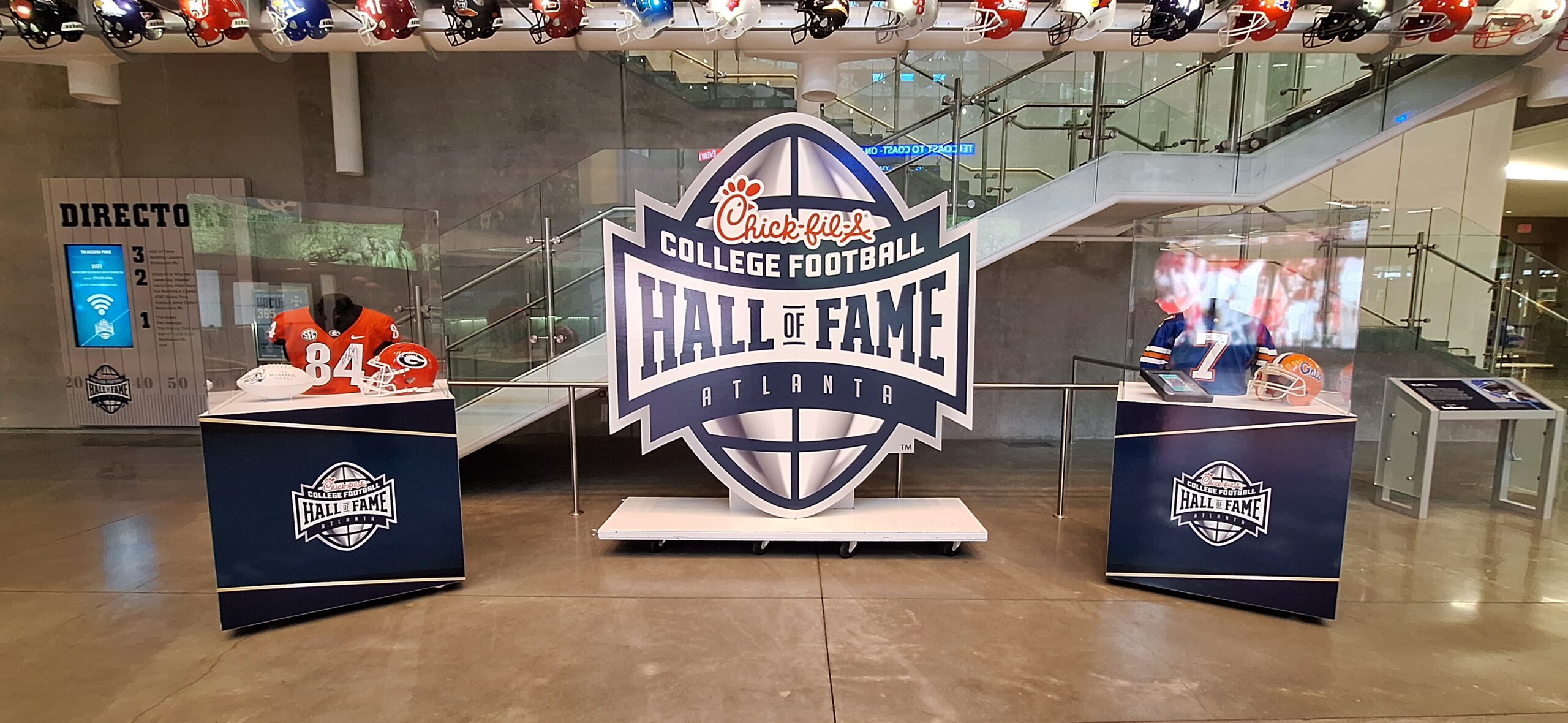
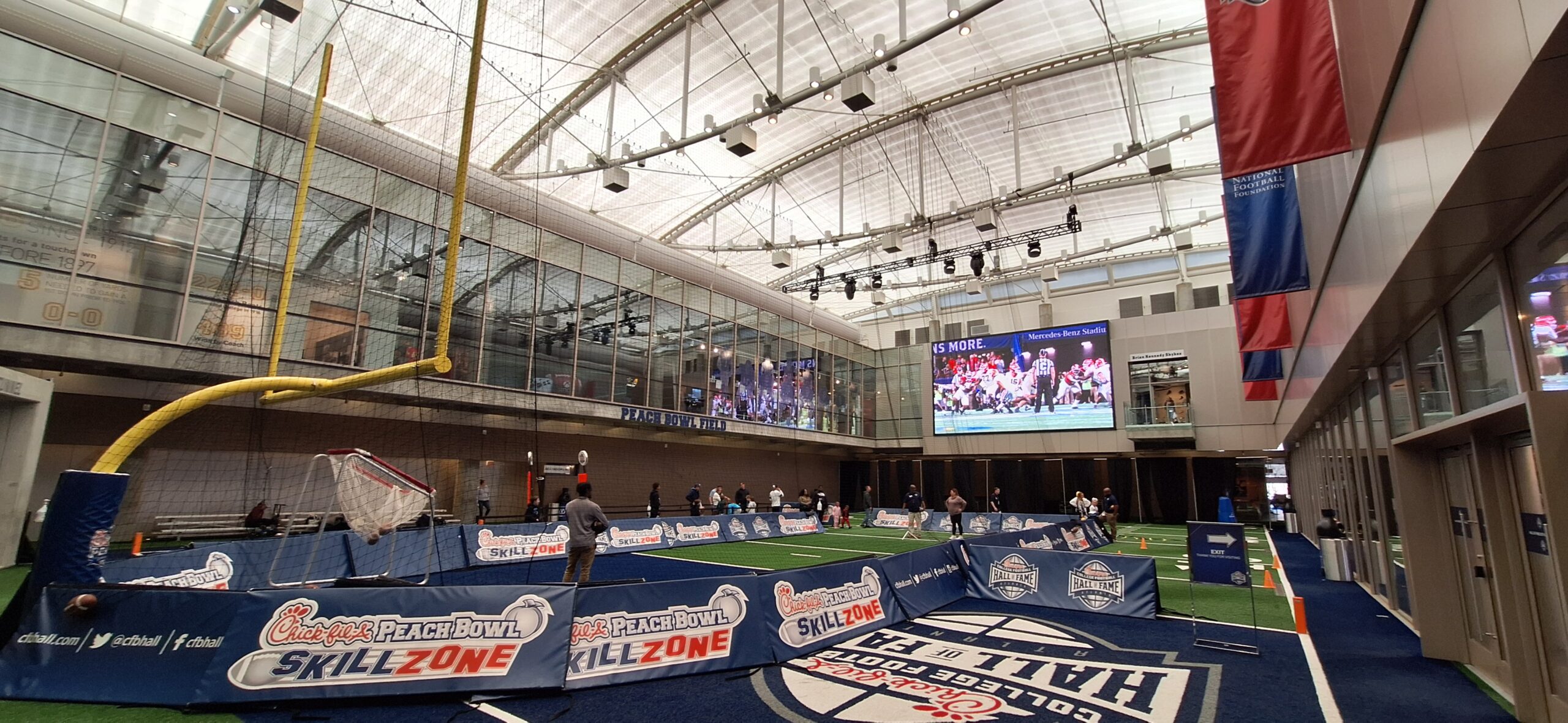
Play Area – College Football Hall of Fame
World of Coca-Cola:
No trip to Atlanta is complete without visiting the World of Coca-Cola. I opted for the regular tour, which includes access to the tasting room with over 40 Coca-Cola products worldwide. The guided tour, while informative, didn’t seem to offer much more than what you could learn by exploring the exhibits yourself. Highlights included the evolution of Coca-Cola’s famous bottle, a high-security vault where the original Coke recipe is stored, and an exhibit on Coca-Cola’s contribution to modern Santa Claus imagery.
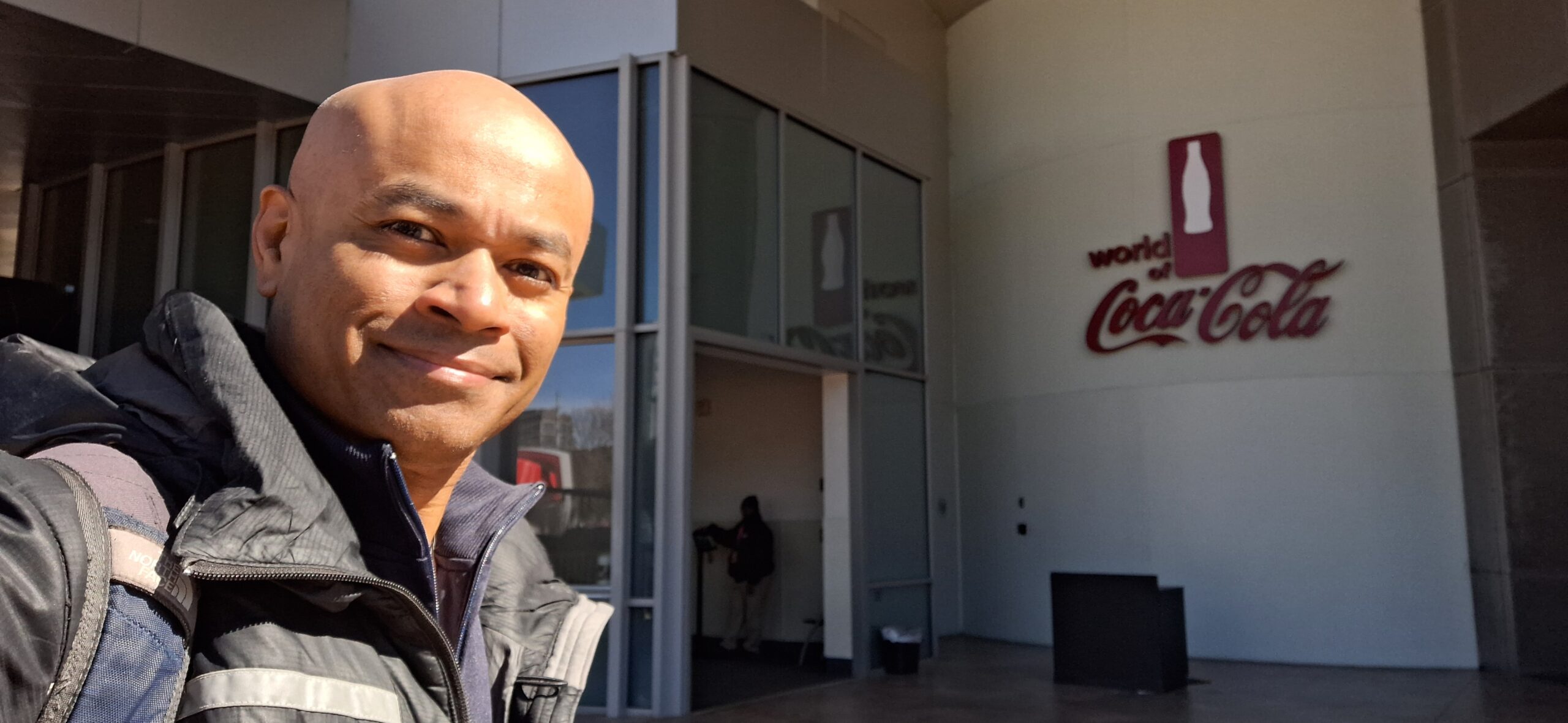
World of Coca-Cola: Entrance
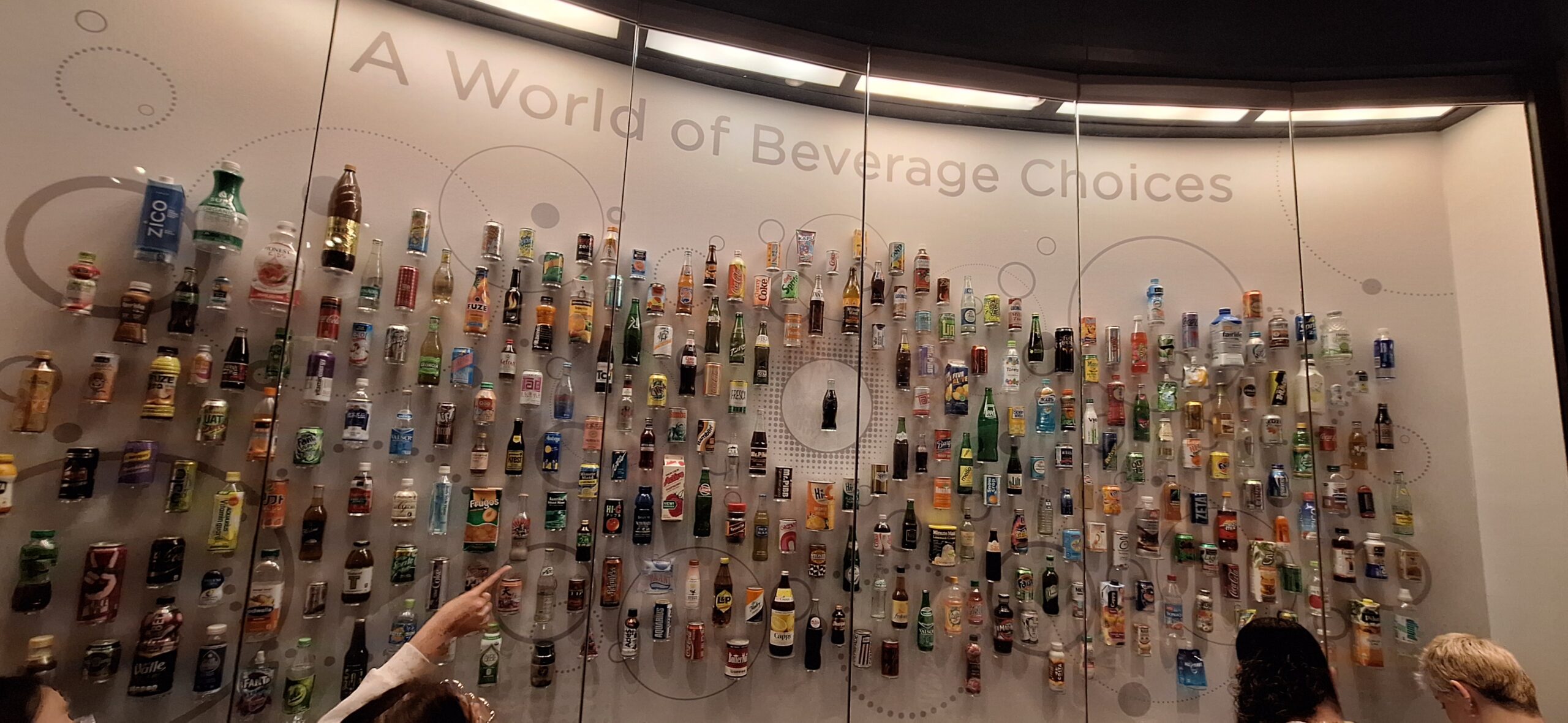
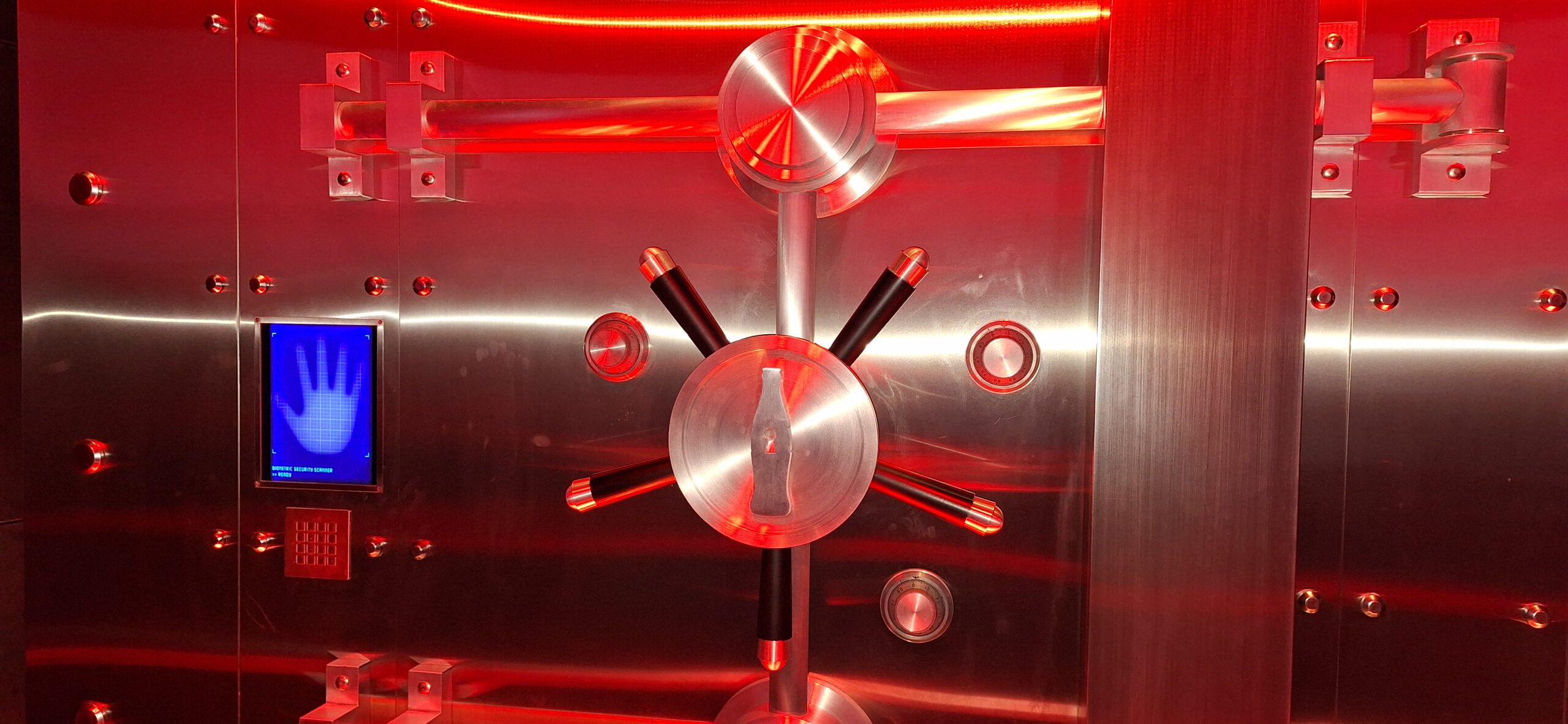
Secret Formula – high security vault
From the guide, I learned that Coca-Cola only initially trademarked the “Coca” part of its name and didn’t secure the complete “Coca-Cola” trademark until 12 years later. This allowed a blue-labeled competitor to legally use “cola” in its branding.
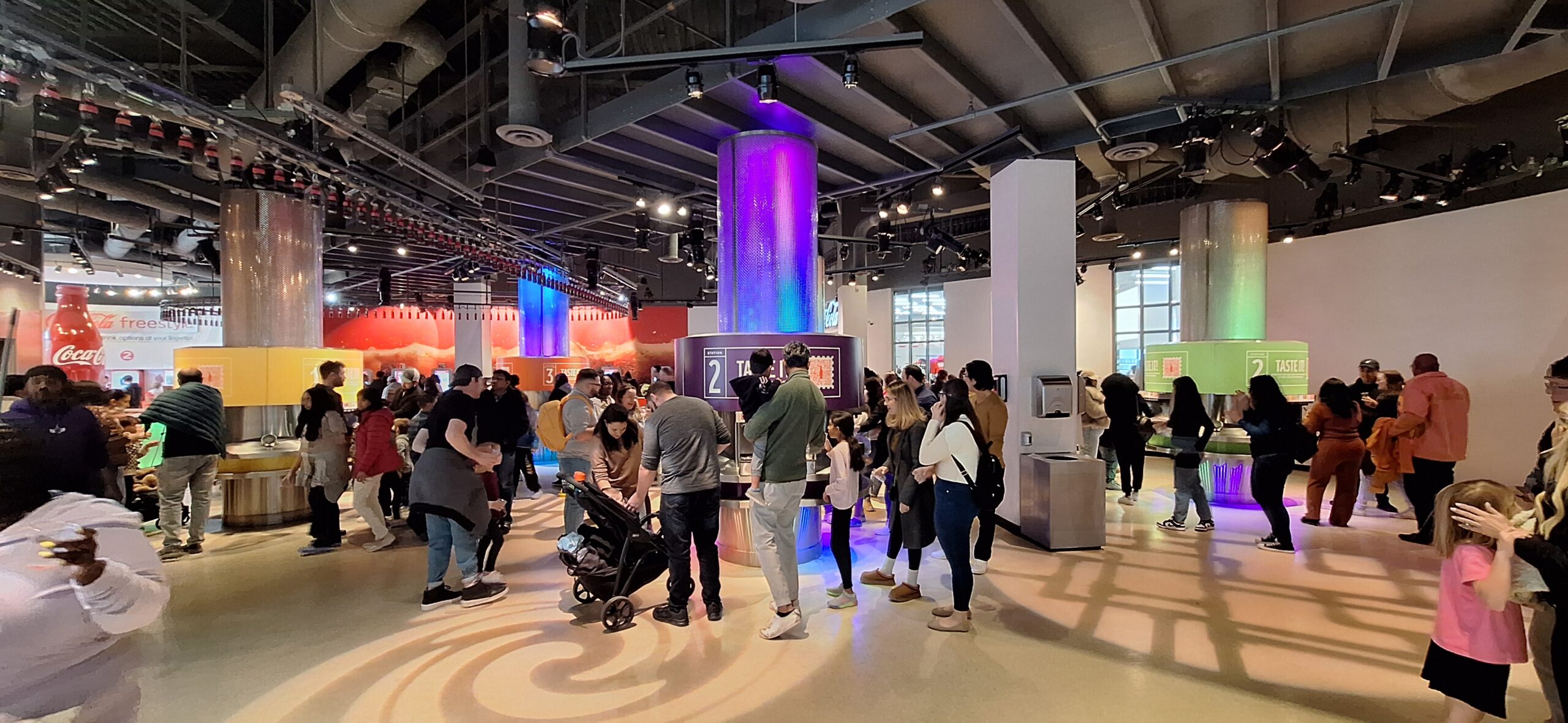
Tasting Room
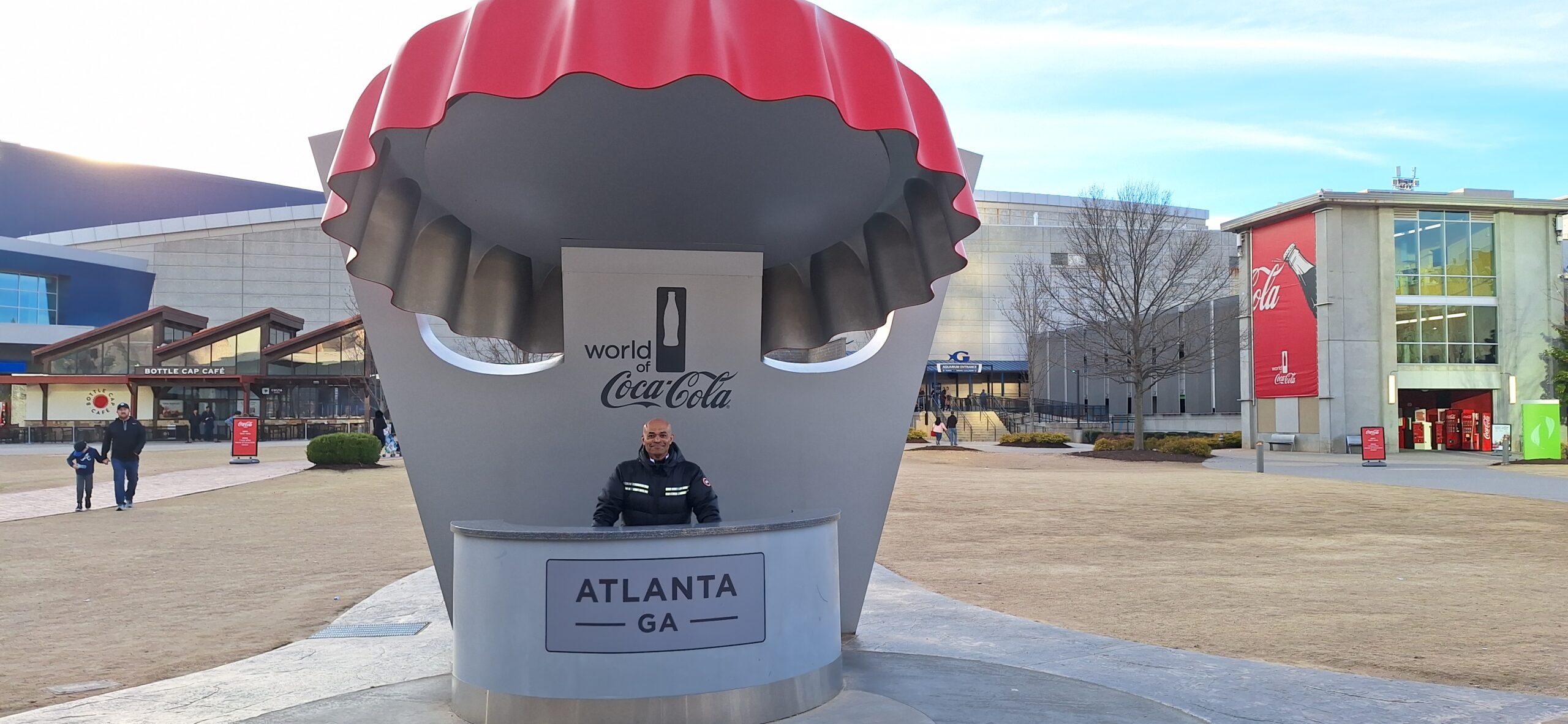
World of Coca-Cola, Atlanta, GA
Takeaway
In two days, I could pack in many of Atlanta’s top sights, all within walking or short Uber rides from my downtown hotel. If you’re planning a trip, avoid visiting during the February weekend of the Cheerleading Championship, as hotels tend to be fully booked. With strategic use of miles, points, and careful planning, a weekend in Atlanta doesn’t have to break the bank. It’s a city rich in history, culture, and, of course, Coca-Cola!
